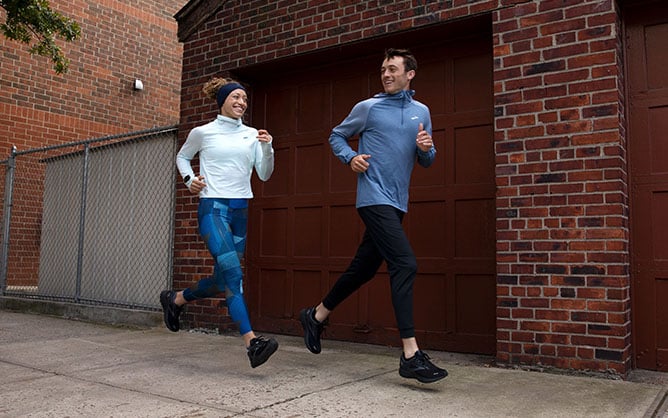Behind the Seams: Winter layers
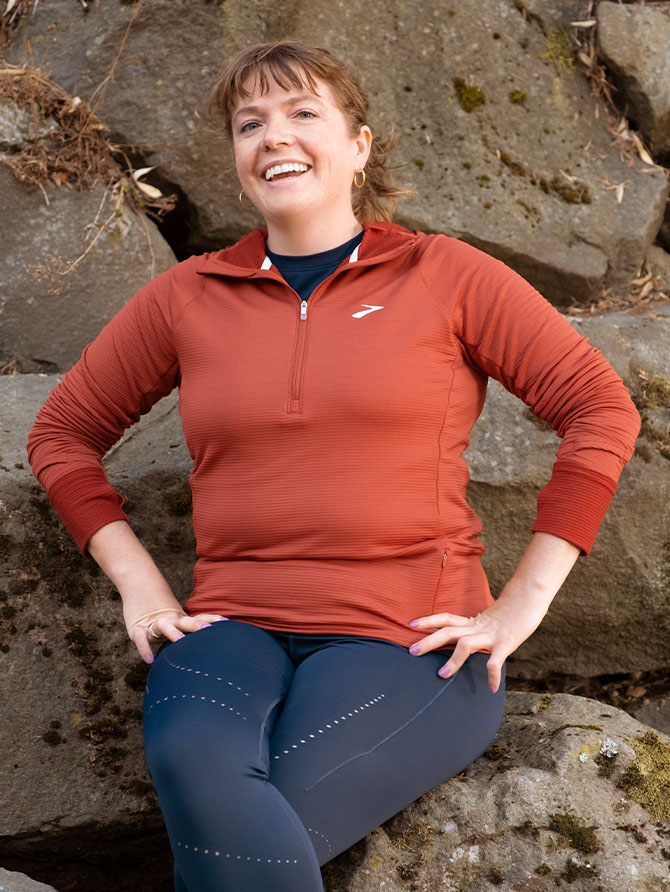
A Brooks senior material developer shares how the apparel team creates Brooks’ go-to winter layers.
Allison Gentry is a self-professed city explorer who loves to run and walk all over urban Seattle. But if you’d asked Gentry 10 years ago if she could imagine herself living in the Pacific Northwest, contributing to a team that designs industry-leading running apparel, she’d have laughed at you.
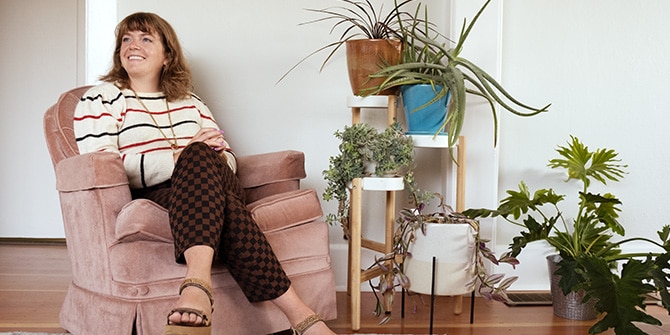
“I thought I wanted to be a costume designer when I was in high school,” she said. “I loved musicals.”
Fast forward to present day and Gentry now works at Brooks, where she sits on a small but mighty four-person team that innovates the materials that go into Brooks’ apparel. Here, she shares the creative process that goes into designing winter layers, like the popular Notch thermal fabric.
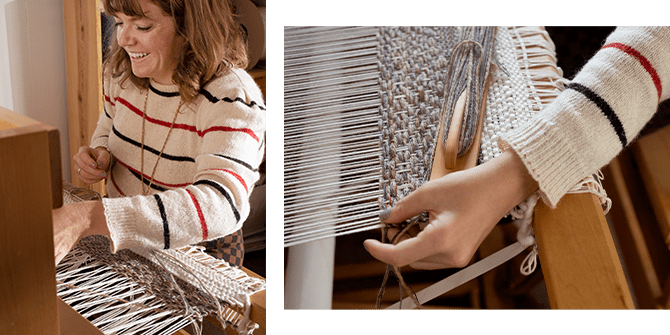
Gentry gets creative with textiles in her home studio.
Editor’s note: This interview has been edited and condensed for clarity.
Can you share a bit about your journey to Brooks and what you specifically do on the team?
I thought I wanted to be a costume designer (I loved musicals when I was younger) so I originally earned my BFA in theatrical production in 2009 from Ithaca College in New York state. After college, I moved to New York City and worked as a freelancer doing costume design and coordination and wardrobing. Eventually, through a series of internships and experiences, I became interested in chemistry and textiles, and I earned my master’s degree in Textile Technology and Management from North Carolina State University.
I started playing pickup soccer when I was living in New York City, prior to grad school. I’d never been a runner, but I started really loving running. I didn’t run in high school — I’m one of those people who found running in my twenties. I feel like I can really relate to some of our customers because I can remember the first time I ran three miles, for example, and being SO excited about running that distance!
After graduate school, I moved to Seattle because I was curious about the West Coast. I was still running and had completed a half marathon at that point. Then, a position opened up at Brooks and I joined the materials team in 2018.
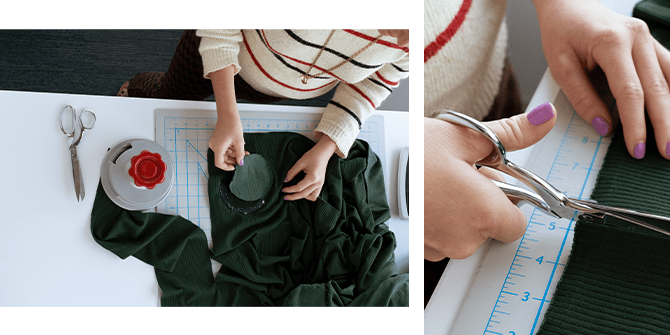
Gentry cuts and measures fabric at Brooks headquarters.
There are two terms that runners associate with performance fabrics: Wicking and quick-dry. In your own words, can you define these terms and how you test each quality on a given fabric?
Wicking refers to the ability of a fabric to move sweat away from skin. It can be achieved through construction — the way a fiber is twisted — or by adding a wicking additive. Material developers create wicking materials so that moisture (in this case, sweat) can easily spread out across the fabric, allowing it to dry faster. The more moisture that can spread out across the face of a performance fabric (rather than pooling into a puddle) the more efficiently it dries.
As a materials person, it's really important to me we're making long-lasting garments.
It sounds like wicking and quick-drying go hand-in-hand.
Yes! When we’re creating these fabrics, we’re using testing to ensure that the fabrics meet the conditions of standardized tests outlined by the American Association of Textile Chemists and Colorists (AATCC) and the ASTM International. Those are the two largest materials-testing metrics, and they help us determine if a fabric truly is wicking or quick-drying.
Here’s how the quick-dry test works: We first weigh the fabric when it’s dry. We then make the fabric very wet (a process called “wetting-out”) and weigh the fabric again. Next, we expose the fabric to heat using a hot plate, which is designed to mimic the temperature of one’s skin, in a controlled environment, and observe how quickly the fabric dries. At Brooks, our goal for a quick-drying fabric is for it to reach 80 percent of its original fabric weight in 15 minutes or less. At the 80 percent mark, the fabric will feel dry to the touch.
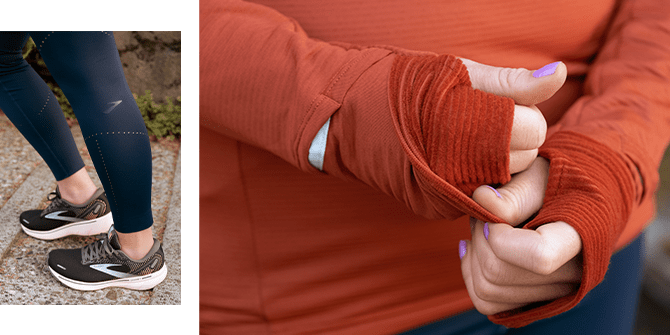
As an apparel designer, can you speak to how you create warm layers with the wicking and quick-dry qualities runners also look for in summer clothing?
We think a lot about how weight and material construction play into the garments we make depending on the season. For example, mesh dries rapidly because there’s less of it, and it weighs less. On the other hand, brushed fleece might dry less quickly but it will keep you warmer in winter because it offers more protection on chilly days.
The Apparel team is continually asking ourselves not only, “What are the right fabrics?” But also, “What’s the right placement of fabrics on a garment?” For example, the Brooks Dash 1/2 Zip is constructed from a brushed jersey with a mesh panel under the arm because, as runners, we tend to sweat under our arms. For insulated garments, we have different weights of insulation for men’s and women’s styles because men tend to run hotter than women. The need of the runner is different.
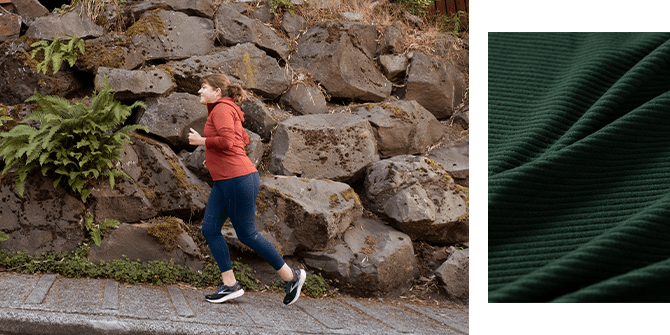
What sort of tests do you do to make sure a fabric will hold up over time?
We perform a variety of tests with third-party testing organizations, depending on what we want a particular material or garment to do. We might test a garment’s ultraviolet protection factor (UPF) — or its ability to block UV rays. We also test for breathability, wind resistance, and water repellency. For bras and tights, we test stretch and recovery. We test our apparel for colour-fastness and general performance characteristics, like snagging or pilling, for up to 25 washes. And if a garment like the Notch Thermal Hoodie has antimicrobial and anti-odour properties, we test the efficacy of those properties for up to 50 washes.
We want to ensure that our claims about the materials and clothing we make are true. And we observe how runners are using our clothing and listen to the feedback they have to share. We’ll then tweak some of our fabrics over time to improve their performance.
For example, we’ve tweaked the Notch fabric over the last several years. We added antimicrobial and anti-odour properties to the Notch in fall 2019 to reduce smell and to potentially increase the number of times you can wear a garment made with Notch without washing it. Last fall, we reduced the fabric’s stretch slightly to create less of a slouchy fit.
As a materials person, it’s really important to me that we’re making long-lasting garments. We’re always considering how to add longevity to a garment while also making it perform well and be sustainable—like using recycled content as much as possible.
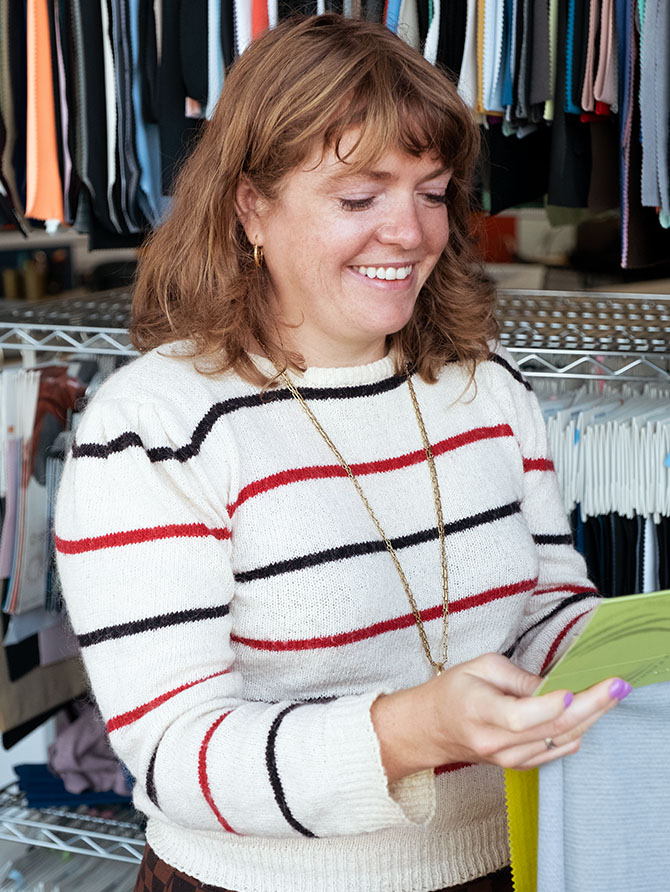
Can you explain what the Bluesign® certification means in regard to the Notch thermal fabric?
Bluesign® is a certification process that evaluates how a garment is made. Through the certification process, we work with Bluesign® to consider how products are manufactured across the entire supply chain. (Not every piece of every garment we make is Bluesign®-certified, as we sometimes work with other third-party certifiers — like OEKO-TEX® for example — to ensure that our products meet sustainability standards.)
What Bluesign® does is it allows us to see and understand our environmental impact, then make informed decisions about our manufacturing process. For instance, do we want to change a garment’s content, construction, or the dyes we use? We’re constantly asking ourselves those questions.
The antimicrobial and anti-odour additive that we integrated into the Notch thermal fabric in fall 2019 is Bluesign®-approved. We think not just about the type of fabric, but all the different components of the fabric and its total environmental impact. We put a lot of thought into every single product we make.
Get the gear
Interested in exploring the products you just learned about? Shop clothing with Notch Thermal Fabrics.
This is a carousel. Use next and Previous buttons to navigate.
